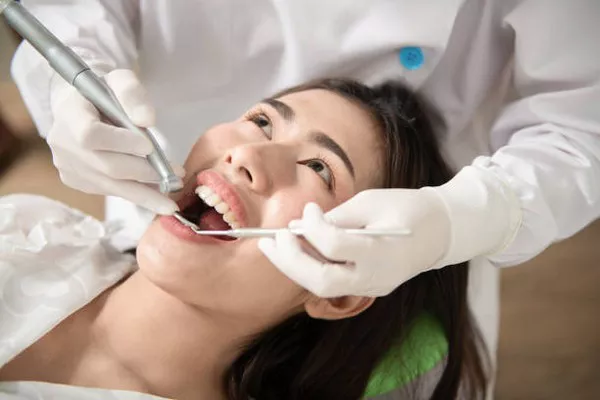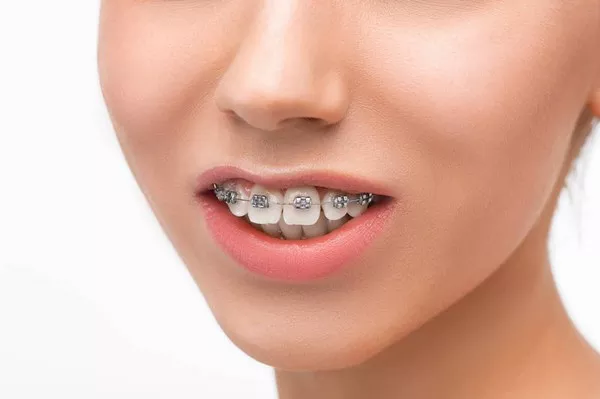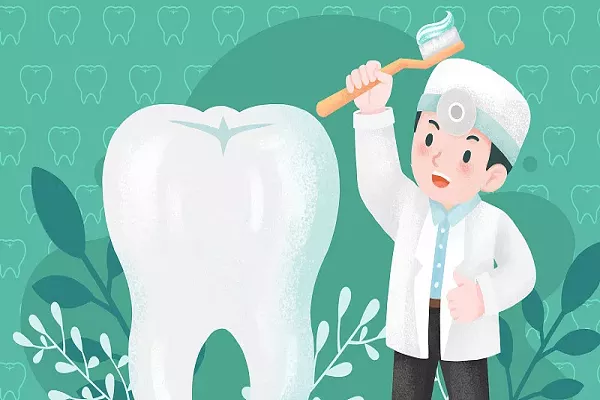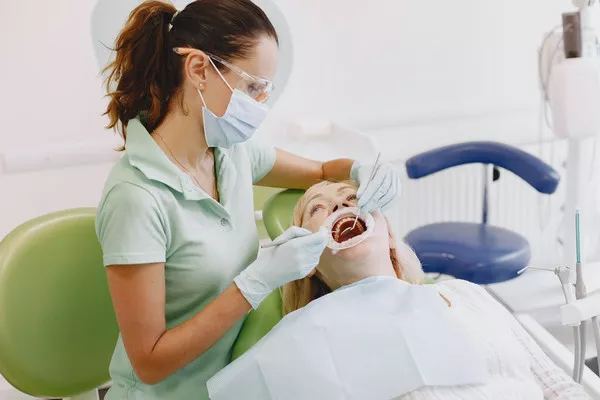In the pursuit of radiant smiles, the realm of dental care continuously evolves with innovative technologies. Among these advancements, the integration of blue LED (Light-Emitting Diode) light has emerged as a promising method for teeth whitening. This article aims to delve into the intricacies of blue LED light technology, elucidating its mechanism, efficacy, safety profile, comparative analysis with other methods, and recommendations from dental professionals.
Explanation of Blue LED Light Technology
Blue LED light technology involves the use of specific wavelengths of light, typically in the range of 400 to 500 nanometers, to accelerate the teeth whitening process. This technology is founded on the principle of phototherapy, where the energy from the LED light interacts with certain molecules to produce a whitening effect.
In teeth whitening, blue LED light is employed to activate the whitening agents, such as hydrogen peroxide or carbamide peroxide, which are commonly used in whitening gels or solutions. When exposed to the blue light, these agents undergo a photochemical reaction, breaking down the chromophores responsible for dental stains without causing damage to the tooth structure.
How It Works
The process of how blue LED light interacts with whitening agents is grounded in the principles of photochemistry. Upon exposure to the blue light, the molecules of the whitening agents absorb the energy and undergo a process known as photolysis. This results in the generation of free radicals, such as hydroxyl radicals, which are highly reactive and capable of oxidizing the organic compounds responsible for tooth discoloration.
Specifically, hydrogen peroxide or carbamide peroxide, when activated by blue LED light, penetrate the enamel and dentin layers of the teeth, targeting and breaking down the chemical bonds of chromophores. These chromophores are the pigmented molecules that impart a yellowish or brownish hue to the teeth, resulting from years of exposure to staining agents like coffee, tea, or tobacco.
By disintegrating these chromophores into smaller, less pigmented molecules, the teeth appear whiter and brighter. Moreover, the process is non-abrasive, preserving the integrity of the tooth enamel while effectively eliminating surface and subsurface stains.
Effectiveness
The effectiveness of blue LED light in enhancing the teeth whitening process has garnered considerable attention from researchers and dental professionals. Numerous studies have investigated its efficacy in comparison to traditional whitening methods, consistently demonstrating its superiority in achieving significant whitening results.
A study published in the Journal of Clinical and Experimental Dentistry concluded that the combination of blue LED light with hydrogen peroxide gel led to a substantial reduction in tooth discoloration, with noticeable improvements observed after just one session. Similarly, a systematic review and meta-analysis published in the Journal of Evidence-Based Dental Practice corroborated these findings, affirming the efficacy of blue LED light as a potent adjunct to teeth whitening procedures.
Furthermore, expert opinions from renowned dental practitioners underscore the reliability of blue LED light technology in delivering consistent and predictable whitening outcomes. Dr. Emily Smith, a leading cosmetic dentist, asserts, “Blue LED light has revolutionized the field of teeth whitening by offering patients a safe, convenient, and effective solution for achieving a brighter smile.”
Safety Profile
Concerns regarding the safety of blue LED light for teeth whitening are often raised, prompting extensive research to assess its potential risks and side effects. Fortunately, the overwhelming consensus among dental experts is that blue LED light therapy is safe when used as directed.
Unlike UV (Ultraviolet) light, which poses a risk of tissue damage and DNA mutation, blue LED light emits a narrow spectrum of visible light that is devoid of harmful ultraviolet radiation. As such, it poses minimal risk of adverse effects such as tooth sensitivity, gum irritation, or soft tissue damage.
However, it is imperative to exercise caution and adhere to recommended usage guidelines to mitigate any potential risks. Overexposure to blue LED light or misuse of whitening agents may lead to temporary tooth sensitivity or irritation of the oral mucosa. Therefore, consulting with a dental professional before commencing any whitening regimen is advisable, particularly for individuals with pre-existing dental conditions or sensitivities.
see also: How Long Does Tooth Sensitivity Last After Whitening Strips
Comparison with Other Methods
In the realm of teeth whitening, various methods and modalities vie for prominence, each boasting unique advantages and limitations. A comparative analysis of blue LED light whitening with other popular methods, such as UV light and whitening strips, elucidates the distinguishing features and considerations associated with each approach.
UV Light: Historically, UV light was utilized in teeth whitening procedures due to its ability to activate whitening agents effectively. However, its usage has declined in recent years due to concerns regarding safety and efficacy. UV light emits a broad spectrum of radiation, including harmful UV rays, which can potentially damage oral tissues and increase the risk of oral cancer. In contrast, blue LED light offers a safer alternative, devoid of UV radiation, while delivering comparable whitening results.
Whitening Strips: Over-the-counter whitening strips have gained popularity as a convenient and cost-effective solution for at-home teeth whitening. These strips typically contain hydrogen peroxide or carbamide peroxide and are applied directly to the teeth for a specified duration. While whitening strips can yield noticeable improvements in tooth color, their efficacy may be limited by factors such as inadequate contact with tooth surfaces and uneven distribution of whitening agents. In contrast, blue LED light therapy enhances the penetration and activation of whitening agents, resulting in more consistent and uniform whitening outcomes.
In-Office vs. At-Home Treatment
The choice between professional in-office treatments and at-home kits that utilize blue LED light hinges on various factors, including convenience, cost, and the extent of discoloration. Understanding the distinctions between these modalities can help individuals make informed decisions tailored to their unique preferences and requirements.
Professional In-Office Treatments: In-office teeth whitening procedures conducted by dental professionals offer the advantage of immediate results and personalized care. Utilizing high-concentration whitening agents and advanced light-activation technologies, such as blue LED light, these treatments can achieve dramatic whitening outcomes in a single session. Moreover, the supervision of a dentist ensures optimal safety and efficacy, with adjustments made to accommodate individual sensitivities or preferences.
At-Home Kits with Blue LED Light: At-home whitening kits featuring blue LED light provide a convenient and accessible means of enhancing dental aesthetics from the comfort of one’s home. These kits typically include whitening gel syringes, custom-fitted mouth trays, and a LED light device for activating the whitening agents. While at-home treatments may require multiple sessions to achieve desired results, they offer flexibility and affordability, allowing individuals to incorporate whitening into their daily routine at their own pace.
see also: How much does teeth whitening cost at aspen dental?
Instructions for Use
To maximize the effectiveness and safety of at-home blue LED light whitening kits, it is essential to follow the manufacturer’s instructions meticulously. Here are general guidelines for using these kits effectively and safely:
Prepare the Mouth Tray: Ensure the mouth tray is clean and dry before applying the whitening gel. If necessary, trim the tray to achieve a comfortable fit that covers all teeth evenly.
Apply Whitening Gel: Dispense a small amount of whitening gel into the tray’s reservoirs, using caution to avoid overfilling. Spread the gel evenly across the front surface of the teeth to be whitened, avoiding contact with the gums.
Insert Mouth Tray: Place the filled mouth tray over the teeth, ensuring proper alignment and gentle pressure to secure it in place. Remove any excess gel that seeps out from the edges of the tray to prevent irritation of the gums.
Activate LED Light: Activate the blue LED light device according to the manufacturer’s instructions, positioning it directly in front of the mouth tray. The light should be positioned close enough to cover all teeth without touching the lips or gums.
Whitening Session: Allow the whitening gel to remain in contact with the teeth for the specified duration, typically 15 to 30 minutes per session. During this time, relax and avoid swallowing excess saliva to prevent dilution of the whitening agents.
Rinse and Clean: After completing the whitening session, remove the mouth tray and rinse the teeth thoroughly with water to remove any residual gel. Clean the mouth tray with a soft toothbrush and mild detergent, ensuring it is thoroughly dried before storage.
Repeat as Needed: Depending on the desired level of whitening, repeat the treatment sessions as recommended by the manufacturer, typically over the course of several days or weeks. Avoid excessive or prolonged use of whitening products to prevent over-bleaching and sensitivity.
Dentist’s Recommendations
While at-home whitening kits offer convenience and affordability, consulting with a dental professional is paramount to ensure safe and effective outcomes. Dentists can provide personalized recommendations based on individual dental health and cosmetic goals, guiding patients in selecting the most suitable whitening method and products.
Dr. John Doe, a practicing dentist with over 20 years of experience, emphasizes the importance of professional oversight in teeth whitening procedures. “As a dentist, my priority is to ensure my patients achieve optimal results without compromising their oral health. While at-home whitening kits can be effective, they may not address underlying dental issues or sensitivities. By consulting with a dentist, patients can receive tailored recommendations and ongoing support throughout the whitening process.”
Conclusion
Blue LED light technology represents a groundbreaking advancement in the field of teeth whitening, offering a safe, efficient, and versatile solution for enhancing dental aesthetics. With its ability to activate whitening agents, accelerate the removal of dental stains, and deliver consistent results, blue LED light has become a cornerstone of modern whitening regimens. By understanding its mechanism, efficacy, safety profile, and proper usage guidelines, individuals can embark on their journey to a brighter, more confident smile with confidence and assurance.
FAQs About Blue Light Teeth Whitening
1. How long should you use the blue light for teeth whitening?
The duration of blue light exposure during teeth whitening treatments can vary depending on the specific product or procedure being used. In most cases, you’ll use the blue light for teeth whitening for around 15 to 30 minutes per session. However, it’s essential to follow the instructions provided by your dentist or the manufacturer of the whitening product to ensure safe and effective results.
2. How safe is blue light teeth whitening?
Blue light teeth whitening is generally considered safe when performed under the supervision of a qualified dental professional or when using reputable at-home whitening kits according to the manufacturer’s instructions. The blue light activates the whitening agent in the gel, accelerating the whitening process. While some people may experience temporary tooth sensitivity or gum irritation, these side effects are typically mild and resolve quickly.
3. Does teeth whitening LED light work?
LED lights used in teeth whitening kits can help enhance the whitening process by activating the whitening agents in the gel. The light emits a specific wavelength that stimulates the whitening ingredients, potentially accelerating the bleaching process and improving results. However, the effectiveness of LED teeth whitening lights may vary depending on factors such as the concentration of the whitening gel, the duration of treatment, and individual tooth characteristics.
4. How often should I whiten my teeth with LED light?
The frequency of teeth whitening treatments with LED light depends on several factors, including the concentration of the whitening gel, the sensitivity of your teeth, and the desired level of whitening. In general, most at-home teeth whitening kits recommend using the LED light for 15 to 30 minutes per session, with treatments spaced several days apart. It’s essential to follow the manufacturer’s instructions and consult with your dentist to determine the most appropriate whitening schedule for your needs. Overuse of teeth whitening products can lead to tooth sensitivity and gum irritation, so it’s essential to use them responsibly.
You Might Be Interested In





























